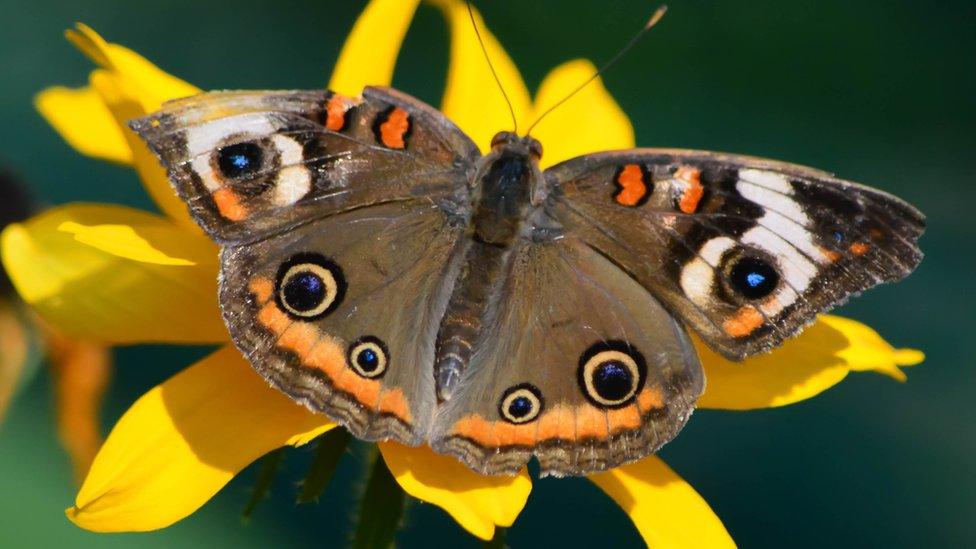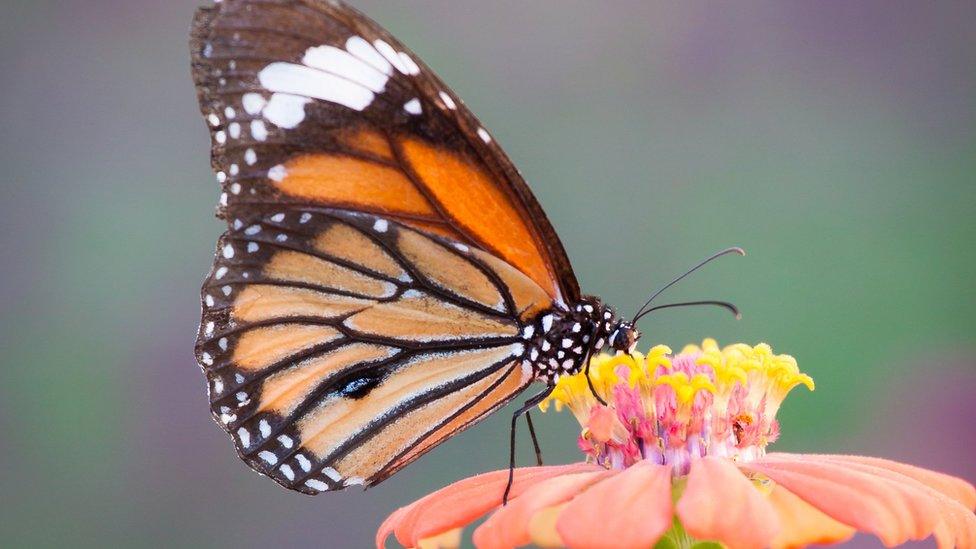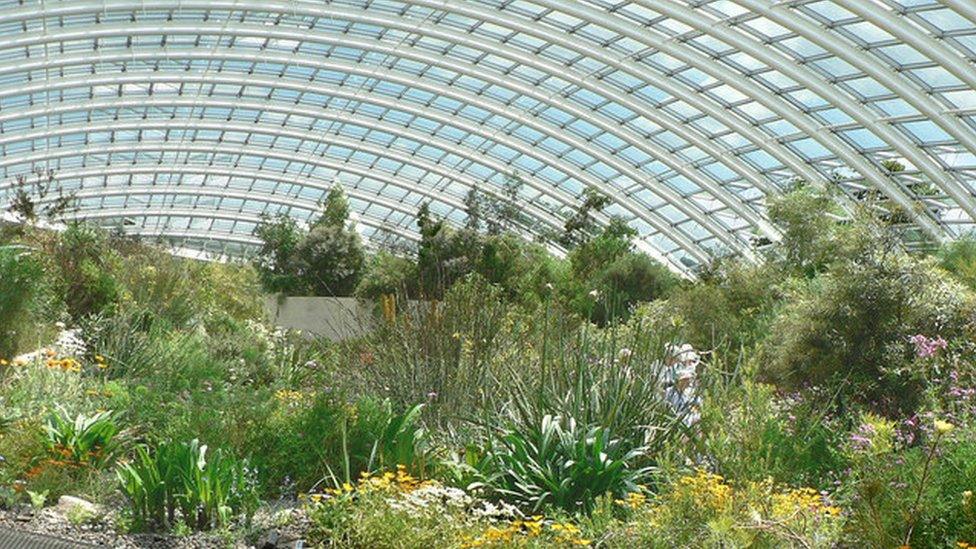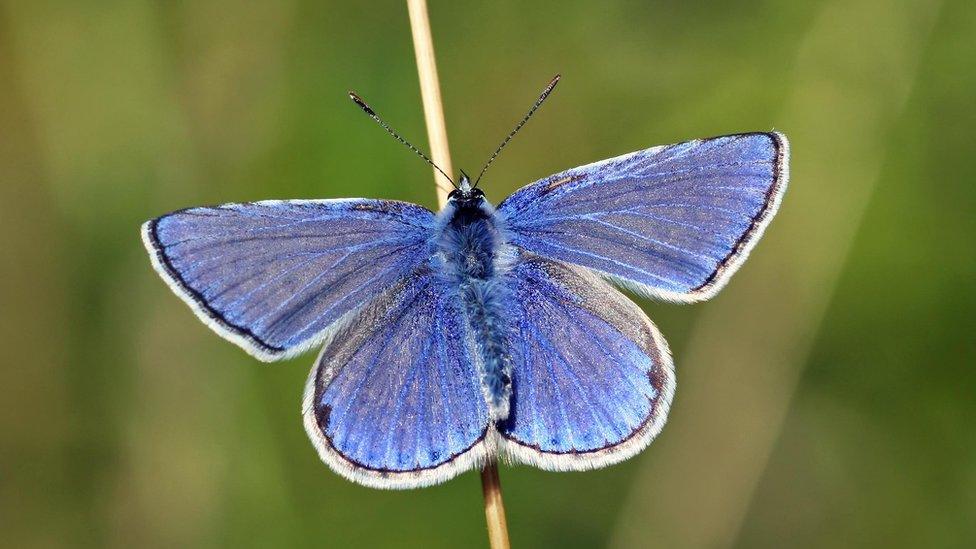Scientists study how light affects butterfly behaviour
- Published

They are one of nature's great sources of colour - but how does light and colour affect butterfly behaviour?
It is one secret scientists at the National Botanic Garden of Wales and Aberystwyth University are trying to unlock.
Butterflies see a broader spectrum of light than humans and the team wants to know how it affects how they cope in captivity.
The garden hopes it may help make those in its butterfly house "happier".
"How we can see the world around us is very different from how a butterfly sees it. The butterfly world, in some ways, is actually more complicated than ours," said Dr Natasha de Vere, head of science at the National Botanic Garden of Wales.
"It's really important. If they're finding a mate, if they're finding their food plants, they've got to be able to see those and they have got to be able to see those with the light levels that they would normally be used to."
Scientists explain a study of how butterflies see
The garden, near Llanarthney, Carmarthenshire, opened its butterfly house in June last year.
At any one time, it has about 300 butterflies of 20 different species.
Dr de Vere said the research could help them improve conditions for the insects during winter, when there is less light than in their natural habitats.
Depending on the results, the garden could, for instance, install specially-designed lights to mimic the conditions best suited to the insects.
"They should definitely be happier, because first of all it should be easier to find a mate and the same for food plants," she added.
She said it could also help to shed light on how different conditions affect butterflies in the wild, assisting with regeneration work after a forest has been cleared and when it comes to releasing captive butterflies into the wild.
Zoologist Dr Roger Santer, of Aberystwyth University, said there is still a lot to be learned about how butterfly species perceive colour.
Human colour perceptions are based on three kinds of cone photoreceptor cells in the eye which respond to light - blue, green and red, he explained.
This means colours for humans are made up of different amounts of blue, green and red, which is why TV and computer screens use them to represent different shades for our eyes.

But butterflies have more types of photoreceptors with different sensitivities, spanning from UV wavelengths to red wavelengths, meaning they have "different colour perceptions than we do".
This allows them to spot certain UV "signposts" which exist in the natural world on plants and on members of the same species, including some markings on their wings and on flowers.
Dr Santer said the team will be running behavioural experiments on different varieties of butterfly.
This could see them picking between differently-coloured stimuli - for example, flowers of varying hues containing sugar rewards - in conditions with UV light and without.
"It might be the butterflies are able to adjust in a glass house or it might be they are unable to," he added.
- Published27 February 2015

- Published25 July 2016

- Published30 December 2015

- Published10 October 2016
